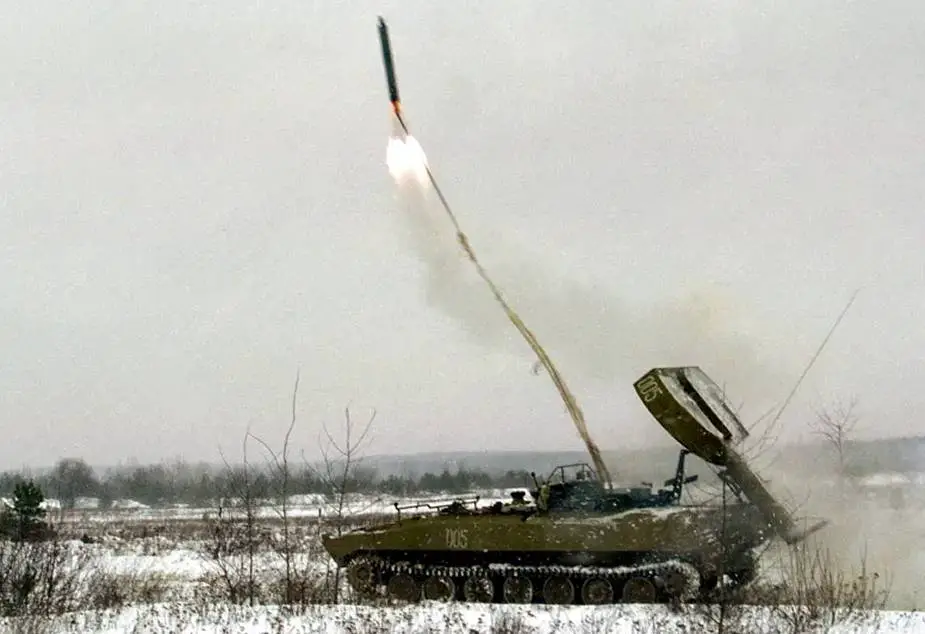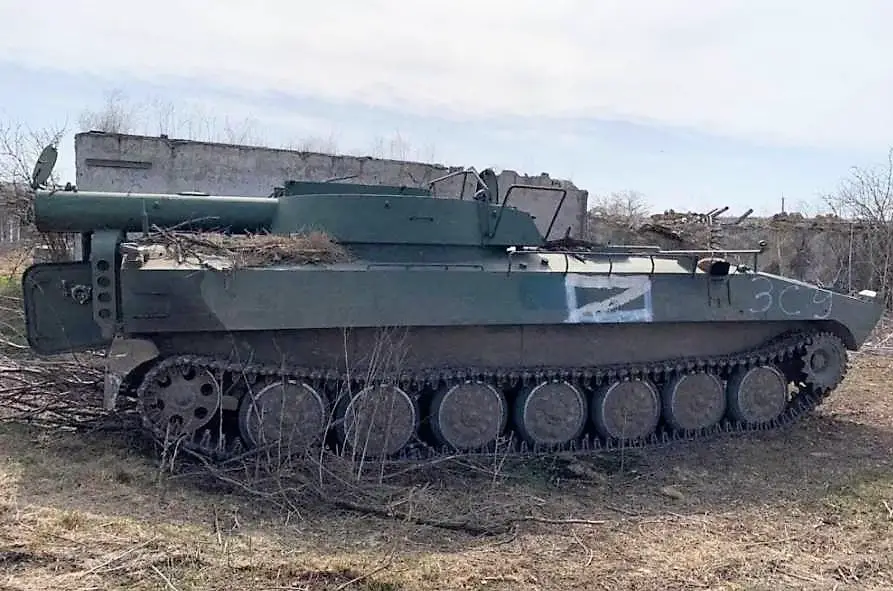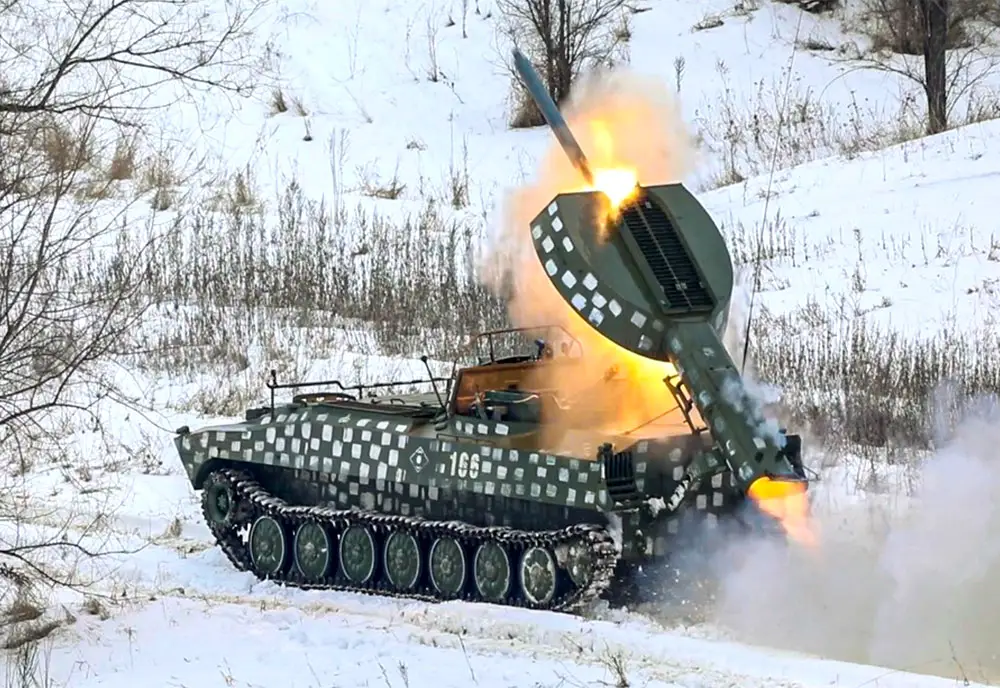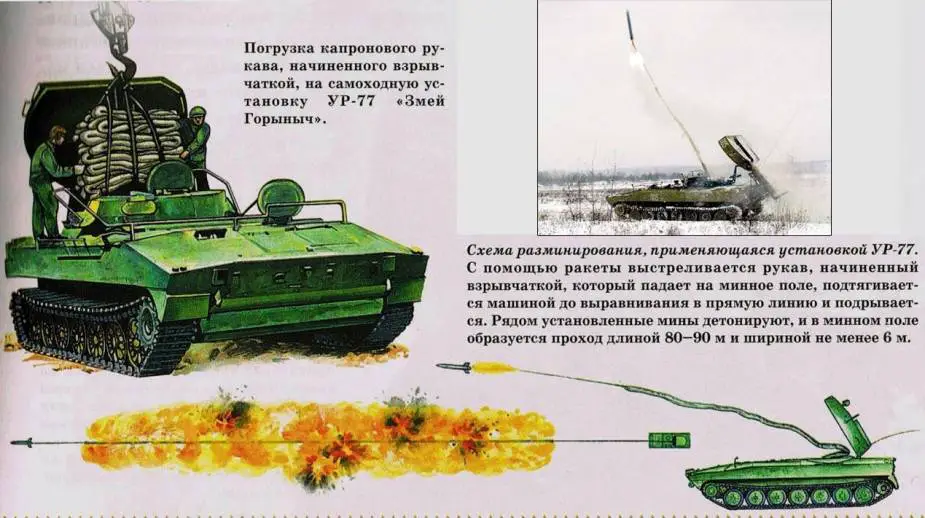Since mid-March, Guy McCardle reports in SOFREP, the Ukrainian city of Rubizhne has bravely been holding out against Russian attackers who have tried every means thinkable to take the town of 56,700 (before the war) citizens. Some weapons were used in unconventional ways, for instance the UR-77 mine-clearing vehicle, nicknamed the Meteorite.
Follow Army Recognition on Google News at this link

UR-77 Meteorite is intended to clear a mined area. (Picture source: Viktor Tolochko)
During the battle of Rubizhne, Ukrainian fighters were using the campus of the RPK Poray-Koshitsy college as a hold-out fighting position. A rather ordinary-looking tracked vehicle - in fact a UR-77 - launched a projectile into the center of an already devastated urban landscape, Guy McCardle reports. However, one can see a 90-meter-long explosive charge trailed by the projectile.
The attack on the college in Rubizhne wasn’t the only known offensive use of the Meteorite in Ukraine. It was also used when Russian troops tried to take Donetsk International Airport multiple times in Mariupol, Guy McCardle writes. In addition, there is a history of Meteorites being used by the Russians as offensive weapons during the Chechen war. However, their efforts on this front didn’t always have the intended effect: 28 Russian Special Forces operators were killed near Grozny in a friendly fire incident involving the UR-77. The Russian army used the UR-77 during the second Chechen war, launching line charges at houses during the fighting for the village of Komsomolskoye. “The weight of a charge exceeds one ton and the power of the explosion is such that houses in Komsomolskoye were simply wiped off from the face of the earth,” Moscow Defense Brief observed in a history of Russian weapons used in Chechnya. The vehicle has also been used offensively, where its line charges have been used to destroy entire streets in urban combat in Syria and now in Ukraine. The Ukrainian army has managed to capture at least 9 of the Meteorites either through force or after their Russian crews abandoned them.

One of the Russian UR-77 Meteorites captured by Ukrainian forces. The letter “Z” denotes that the vehicle is from the Eastern Military District. (Picture source: mil.in.ua)
The UR-77 Meteorit is based on a variant of the 2S1 Gvozdika self-propelled howitzer chassis. The vehicle is armed with a launcher and two mine-clearing line charges. First, a rocket is fired, pulling the explosive line charges over a minefield where they are detonated. The overpressure of the explosion blows up many types of mines and displaces others. When exploding, a charge causes a shock wave that destroys or disables all the shells or mines along the area of the line charge (with a width of 6 meters and length up to 90 meters). The UR-77 is intended to be operated near the front lines of battle but was not purpose-built to participate directly in combat. Since this is a lightly armored vehicle, other mechanized forces and artillery are required to provide cover fire when such vehicles are employed near enemy positions.

Russian UR-77 Meteorite firing a line charge (Picture source: Russian MoD)

UR-77 Meteorite mine-clearing vehicle. (Picture source: Wikipedia)















